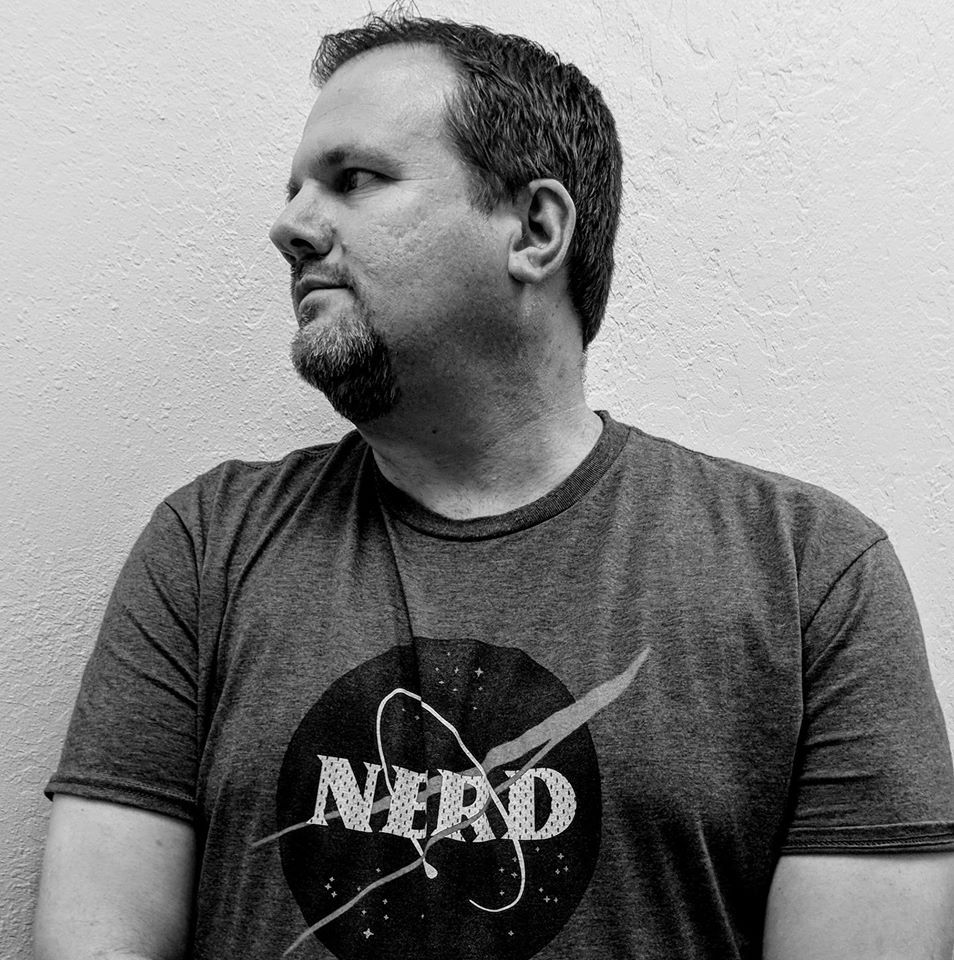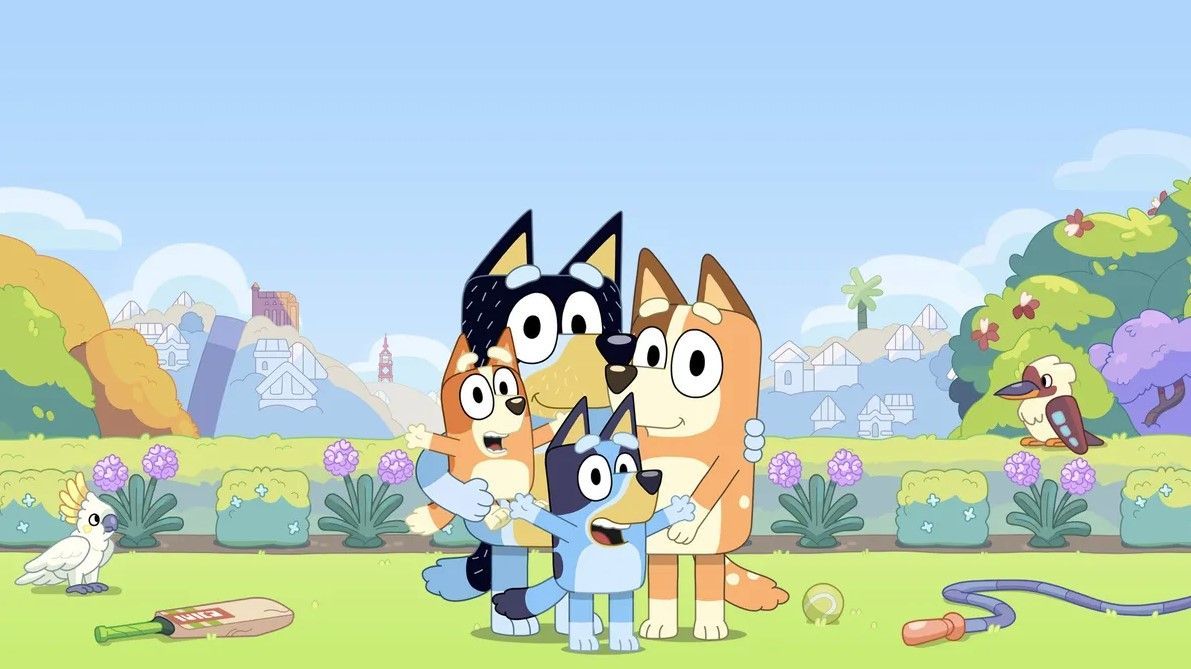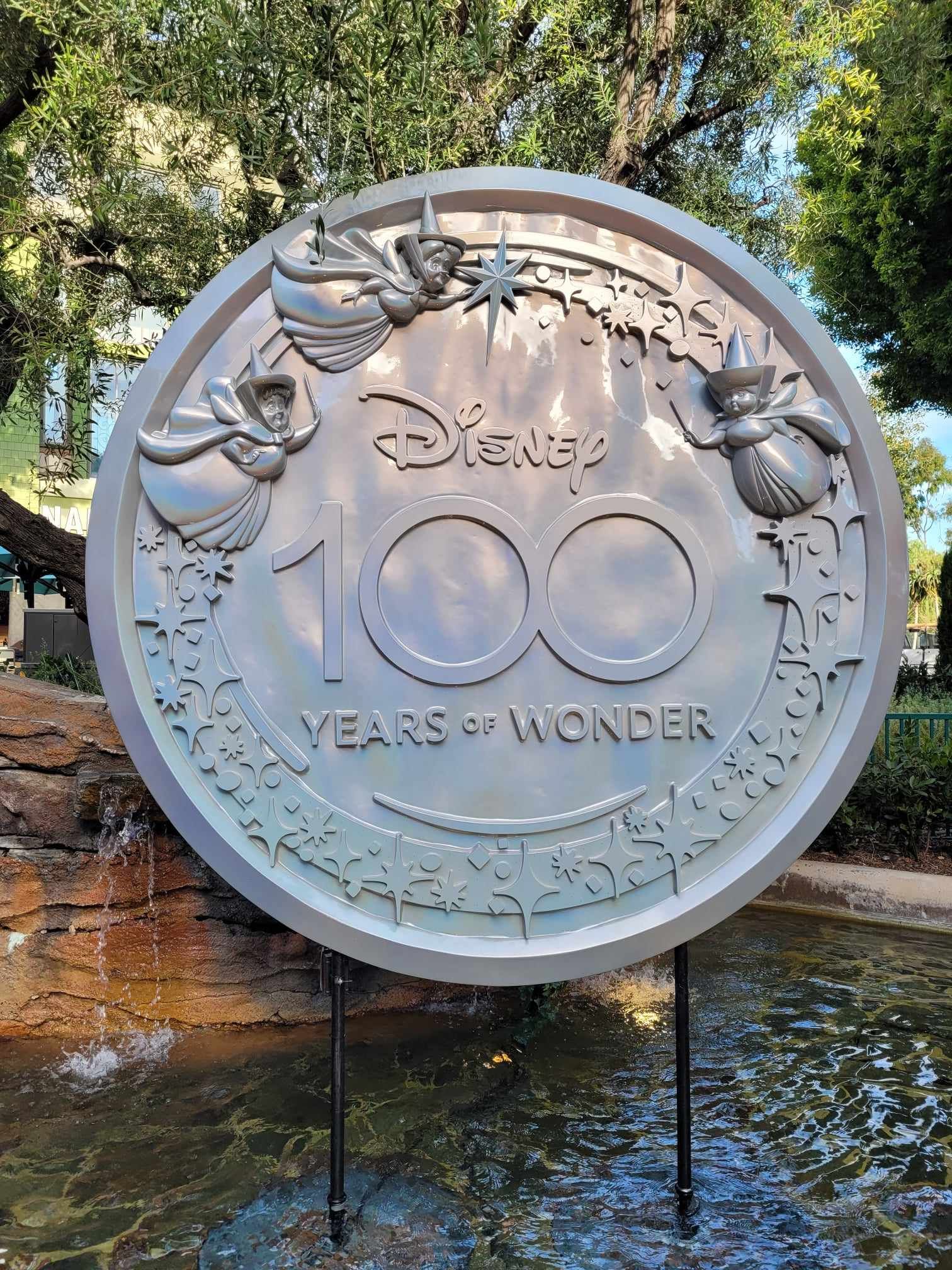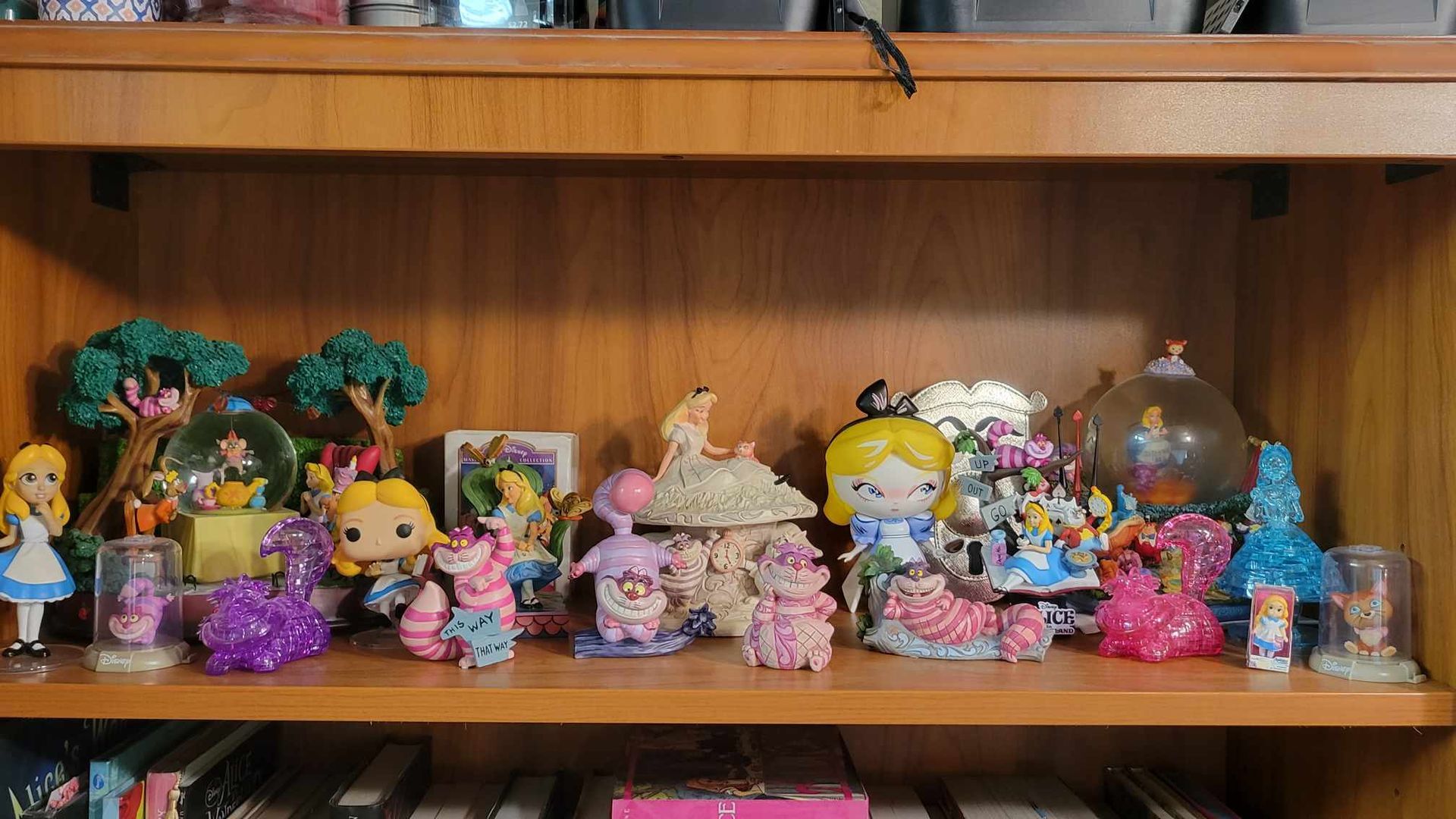Craig D. Barton is a creative consultant, editor, and writer, having written for and consulted on multiple Disney Editions books and various other projects. Besides being a self-described "DisNerd," Craig is an advocate for all arts, loves travel, movies, making his own eclectic music playlists, and, most of all, spending time with his family. Craig currently resides in Avondale, AZ with his lovely wife, quirky daughter, and neurotic yet lovable dog.
1935 - More Color, More Animation, More Stress
by Craig D. Barton
"The Walt Disney Company: 100 Years in 100 Weeks," is the brainchild of Craig D. Barton, presenting weekly posts on the history of the Walt Disney Company. Each post will cover a specific year in Disney's history, featuring essays, shared articles, guest authors, and yearly timelines, all leading up to the company's 100th Anniversary on October 16, 2023. Previous posts in the series can be viewed here..
Be sure to join us every Friday for the newest installment of "The Walt Disney Company: 100 Years in 100 Weeks!"
Flowers, trees, pigs, grasshoppers, ants… even a cantankerous duck had done it by this point. But it would take until February of 1935 for Disney’s most popular character to make his triumphant debut in glorious color. That Mickey’s escapades had been in black & white up to this point was by Walt’s design. “Mickey Mouse, we didn’t put Mickey Mouse in color until 1935 and – well, the color I wanted in The Silly Symphonies,” explained Walt to interviewer Pete Martin. “When I decided to go to color I went to sign for The Silly Symphony series alone feeling that they would – that we could make better use of color. And Mickey Mouse was so successful anyways that it was The Symphonies that could use the color. So, I went to The Symphonies and I didn’t put Mickey Mouse in color until about 3 years later.”
By 1935, it was time for the world to see what Mickey could do in a symphonic storm of color. In “The Band Concert,” audiences saw Mickey attempt to conduct an orchestra full of familiar faces including Goofy, Clarabelle Cow, and Horace Horsecollar. Of course, Donald duck was there, interrupting the concert every step of the way, first as a vendor, then with his own musical arrangements of “Turkey in the Straw” (A callback to Mickey’s black and white Debut in “Steamboat Willie”). Adding to the colorful nature of the characters is the finale, in which a fierce tornado approaches as Mickey conducts “The Storm” segment of The William Tell Overture. In classic gag style, this does not deter either our heroic conductor nor his orchestra, and what follows is a kaleidoscopic array of musical mastery and concentration; when the storm ends, our band is left standing (or hanging from a tree) – even the plucky Donald and his insistence of finishing “Turkey in the Straw.”
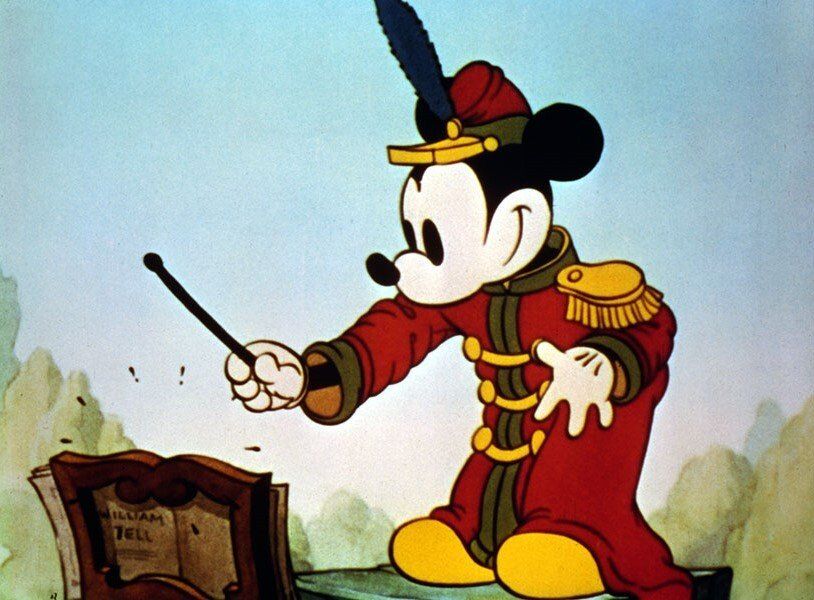
Mickey prepares to tell a colorful story in "The Band Concert."
Mickey and friends had finally arrived in full color, and top-notch animation had once again made an event worth watching.
It goes without saying that top-notch animation was not happenstance, as Walt was constantly striving for the best quality animation available. In early 1935, Walt expressed a desire to hire 300 artists for the studio – with production on Snow White and the 7 Dwarfs ramping up along with demand for the continuing Mickey Mouse and Silly Symphony shorts, there was plenty of work and a demand for quality and consistency. In a memo to in-studio instructor and orientation head Don Graham, he outlined his thoughts on the most important qualities of a good animator:
- Good draftsmanship
- Knowledge of caricature, of action as well as features
- Knowledge and appreciation of acting
- Ability to think up gags and put over gags
- Knowledge of story construction and audience values
- Knowledge and understanding of all the mechanical and detailed routine involved in his work, in order that he may be able to apply his other abilities without becoming tied in a knot by lack of technique along these lines.
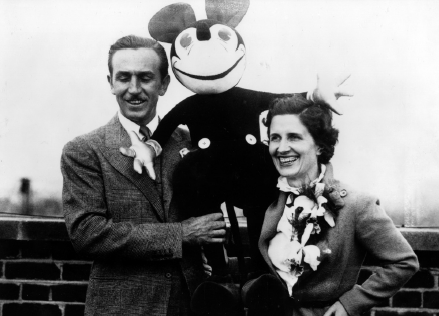
Walt and Lilly, on the roof of the Grosvenor House Hotel in London, 1935 ©Disney
Walt included some of his philosophies of animation on the memo:
“The first duty of the cartoon is not to picture or duplicate real action or things as they actually happen – but to give a caricature of life and action – to picture on the screen things that have run through the imagination of the audience – to bring to life dream-fantasies and imaginative fancies that we have all thought of during our lives or have had pictured to us in various forms during our lives… I definitely feel that we cannot do the fantastic things, based on the real, unless we first know the real.
“Comedy, to be appreciated, must have contact with the audience. This we all know, but sometimes forget. By contact, I mean that there must be a familiar, sub-conscious association. Somewhere, or at some time, the audience has felt, or met with, or seen, or dreamt, the situation pictured. A study of the best gags and audience reaction we have had, will prove that the action or situation is something based on an imaginative experience or a direct life connection… When the action or the business loses its contact, it becomes silly and meaningless to the audience.”
Walt felt he knew what would appeal to the audience, and, given his successes thus far, he had proven to be right. Would Snow White be his next proven success? While it remained in doubt to many industry insiders, work continued ahead. His estimated “quarter of a million dollars” he had spoken of to The New York Times was different from what he told Roy – that estimate was more in the neighborhood of half a million – and costs were already beginning to rise above that! Nonetheless, work continued, and Walt knew that his latest venture would be a public hit just the way Mickey and Silly Symphonies were.
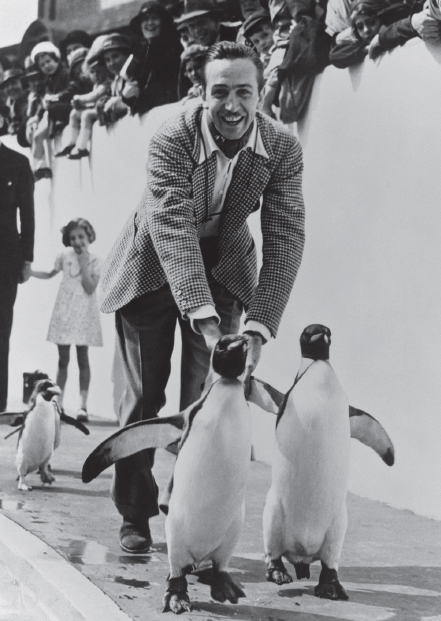
Walt visiting penguins (To the delight of the public) at the London Zoo, 1935 ©Disney
Nonetheless, added stresses of money, time, and straight-out business began to once again take its toll on Walt. Another nervous breakdown was feared. His doctor attributed it to a possible thyroid deficiency, and started giving him injections, which only added to his nervousness. At Roy’s suggestion, another vacation was due. This time it was a trip overseas to Europe, and Roy and Edna would be joining Walt and Lillian. Once again, this trip seemed to put Walt more at ease. Along with the adventure of driving streets of his youth as a Red Cross ambulance driver, Walt was able to see the Disney influence that had been spreading overseas. Viewing a worldwide reach, Walt returned once again refreshed, and with a vision to appeal to even more people. “The more pictures we can make without dialogue,” he mused in another studio memo upon his return, “the better it will be for our foreign market. We have to depend on the foreign market very strongly now on account of the necessity of having larger grosses. However,” he was quick to add, “I wouldn’t let this stand in the way of any good plot or idea that had dialogue in it.”
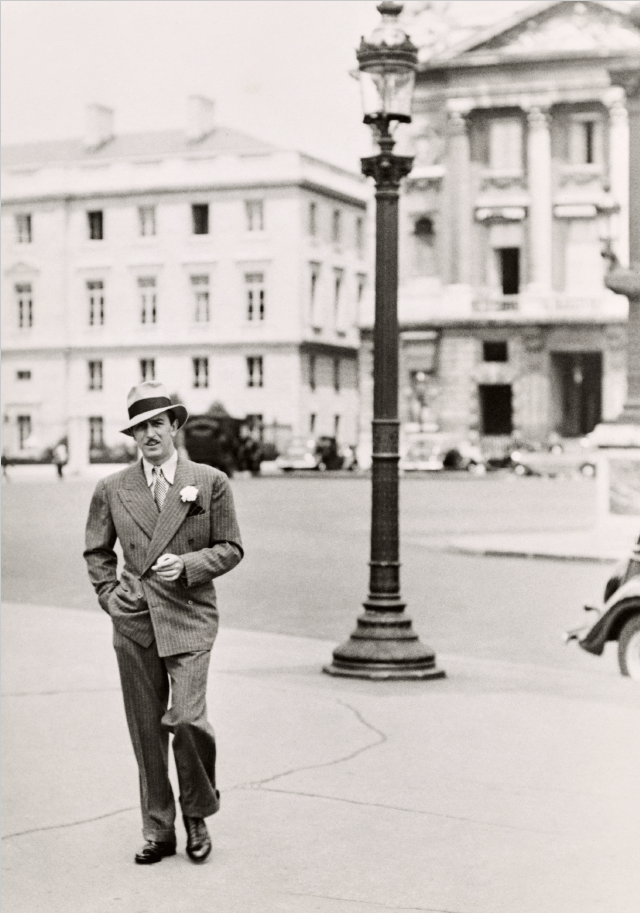
Walt strolls the Place de la Concorde, Paris, 1935 ©Disney
Once again, Walt was ready to get back to work and ended 1935 eager for the Walt Disney Company to make more of what he knew the people wanted. And as for those thyroid injections? According to Disney biographer Bob Thomas, Walt told his secretary, “Tell him I’m cured. He can shoot those things in his own butt from now on.”
The quotable Walt Disney, indeed!
1935
- The Disney Company seeks to hire 300 animators as production on short features and "Snow White and the Seven Dwarfs" ramps up.
- "The Band Concert" is released, marking Mickey Mouse's color debut. ("MIckey's Kangaroo" a few shorts later, would mark his final black and white appearance.)
- Fearing aother nervous breakdown, Roy urges Walt to take an 11 week trip to Europe. Walt returns with a fresh outlook on Disney's foreign appeal.
1935 Animated Releases:
Silly Symphonies - The Tortoise and the Hare - January 12
Mickey Mouse - Mickey's Man Friday - January 19
Mickey Mouse - The Band Concert - February 23
Mickey Mouse - Mickey's Service Station - March 16
Silly Symphonies - The Golden Touch - March 23
Silly Symphonies - The Robber Kitten - April 13
Mickey Mouse - Mickey's Kangaroo - April 20
Silly Symphonies - Water Babies - May 18
Silly Symphonies - The Cookie Carnival - May 25
Silly Symphonies - Who Killed Cock Robin? - June 29
Mickey Mouse - Mickey's Garden - July 20
Mickey Mouse - Mickey's Fire Brigade - September 7
Mickey Mouse - Pluto's Judgement Day - September 28
Silly Symphonies - Music Land - October 12
Mickey Mouse - On Ice - November 9
Silly Symphonies - Three Orphan Kittens - November 23
Silly Symphonies - Broken Toys - December 21
Author's Note - The pictures of Walt used in this article are from his 1935 trip, ©The Walt Disney Company, and can be found in the wonderful book, Travels With Walt Disney: A Photographic Voyage Around the World, by Jeff Kurtti. If you haven't read this fascinating chronicle of Walt and his journeys around the world, I would highly recommend it. It's a wonderful companion to any Walt biography, and tells a great story unto itself!
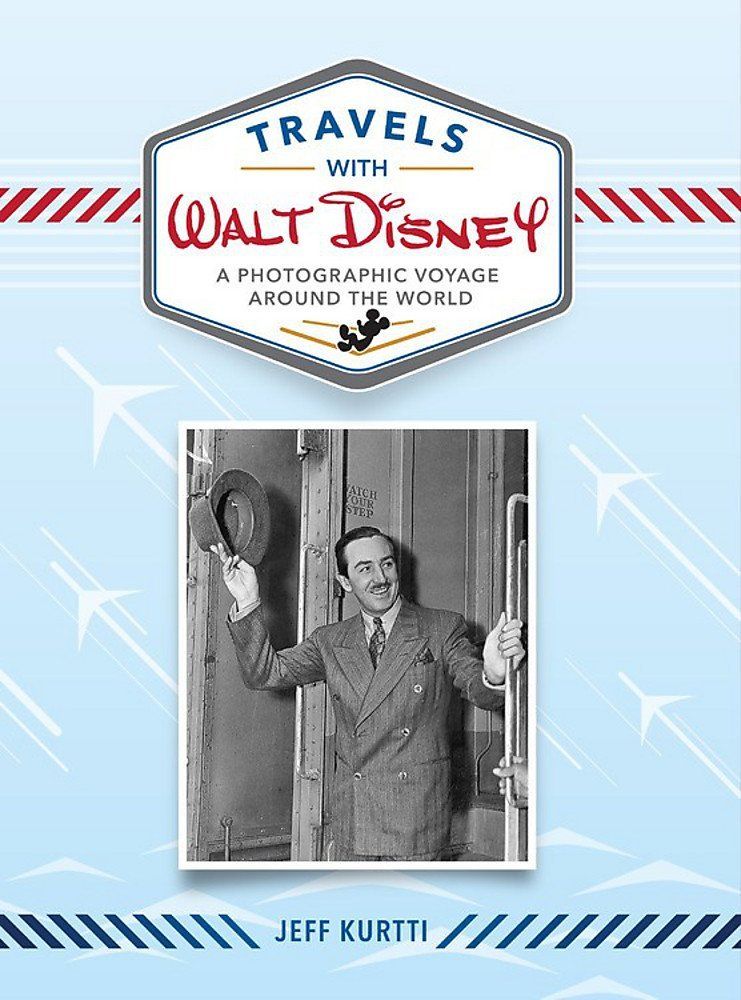
*"The Walt Disney Company: 100 Years in 100 Weeks" is a project conceived by Craig D. Barton and presented by Communerdy. It is in no way affiliated with The Walt Disney Company, and any opinions presented within its content are that of the author(s). For more updates, follow us on https://www.instagram.com/disney100in100/ .

